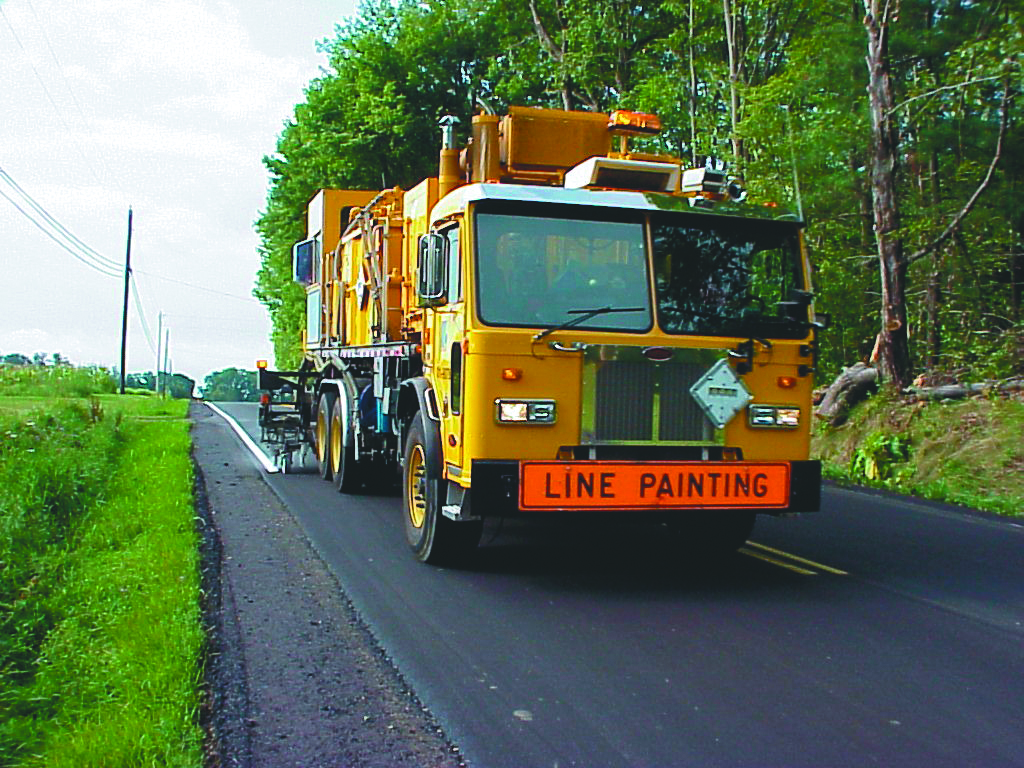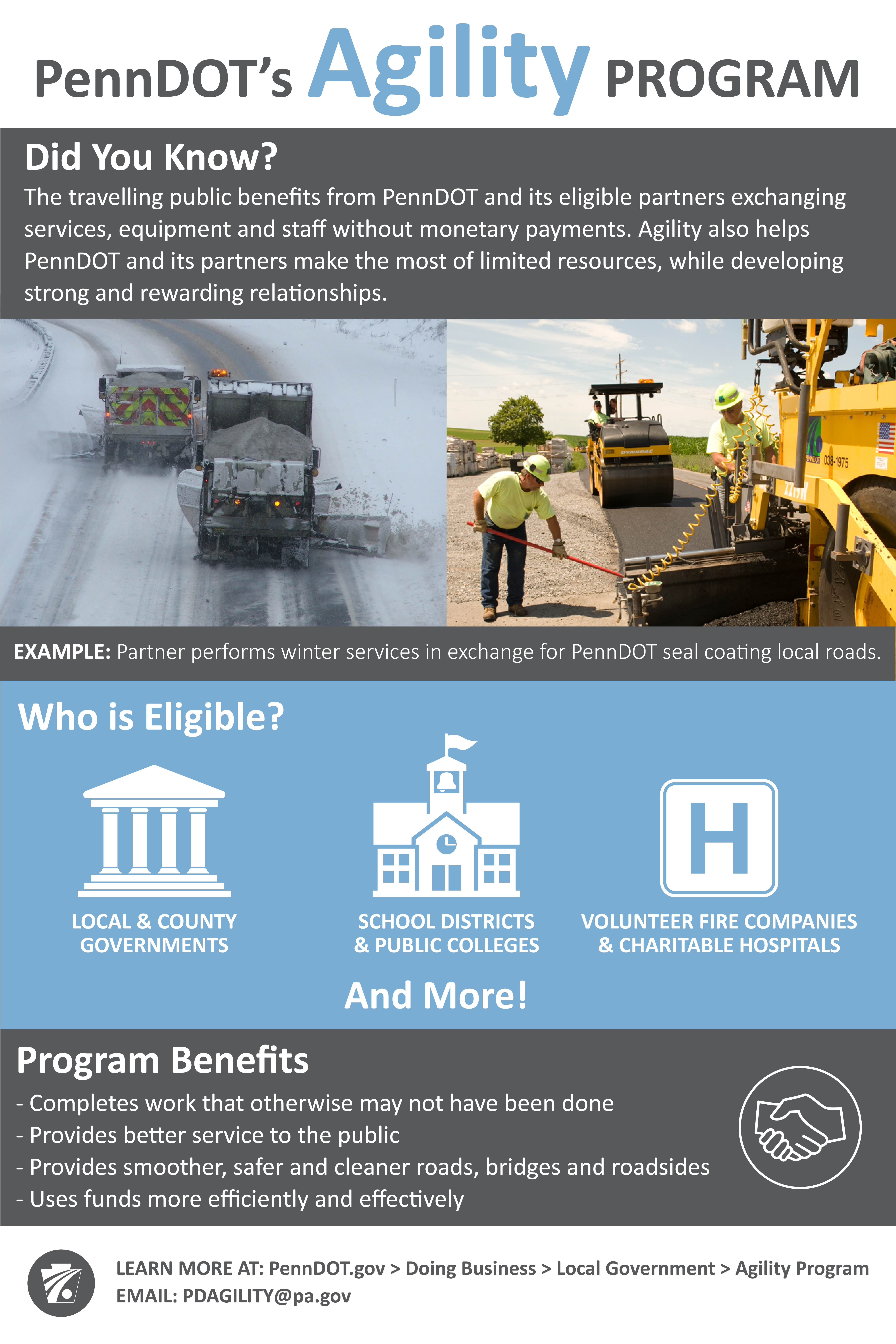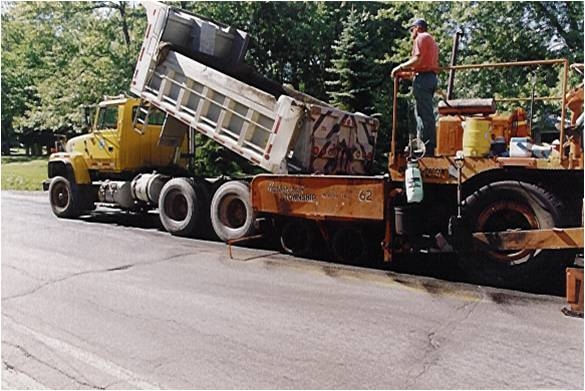PennDOT Agility Program: Building Partnerships & Breaking Boundaries
Check out the
Autumn 2022 Issue of FHWA's
Public Roads magazine, featuring an article about PennDOT's long-standing Agility Program. Agility Program
Overview
The Agility Program was launched in 1996 to enable service-for-service exchanges with eligible Partners, such as municipal governments, state and federal agencies, public colleges and universities, school districts, councils of government, metropolitan and rural planning organizations, water, sewer, housing and municipal authorities, charitable hospitals, volunteer fire and rescue companies, and volunteer emergency medical transport companies.
Agility enables PennDOT and its eligible Partners to exchange services, equipment and staff without monetary payments. Agility helps PennDOT and its Partners make the most of limited resources, while developing strong and rewarding relationships.
History
With support from all levels of PennDOT and AFSCME, a six-week pilot in District 1, located in northwestern Pennsylvania, was conducted in 2016 to assess the usefulness of Agility in delivering transportation services with municipal governments. This pilot created an appetite for more Agility applications in PennDOT's highway maintenance community. By 1997, Agility was being used statewide in each of PennDOT's 11 engineering districts and was being used in all Pennsylvania counties within five years of the program's inception. In the beginning, Lehigh University's Iacocca Institute provided academic support for applying the principles of Agility in the workplace. Dr. Roger Nagel, of the Iacocca Institute and his fellow business consultants helped to implement the Agility principles across the department and served as guides to PennDOT's field staff.

Through Agility, PennDOT continues to realize the long-term impacts of improved relationships. These relationships foster cooperative planning and service delivery that bring about better public services through hundreds of service exchanges. Trading services for services among eligible community organizations and local governments allow PennDOT and their Partners to stretch limited resources. For example, PennDOT might pave a portion of a volunteer fire department's parking lot and the fire department would use their water trucks to flush state-owned bridges. As a result, both PennDOT and the partner are able to create efficiencies and save money. Nearly 3,300 Agility Agreements with about 2,000 Partners have been executed across the commonwealth over the past 25 years.

25 Years of Excellence
PennDOT's Agility Program celebrated its
25th Anniversary in 2021. Through Agility, PennDOT and its eligible Partners are able to exchange services, equipment and staff without monetary payments, helping to make the most of limited resources, while developing strong and rewarding relationships. Examples of more common exchanges include: a Partner receiving painted road lines in exchange for mowing; a Partner receiving inlet cleaning in exchange for street sweeping; and a Partner paving local roads in exchange for litter pick up and meeting space, to name a few; though, many unconventional Agility agreements have been executed since the program's inception as well.
